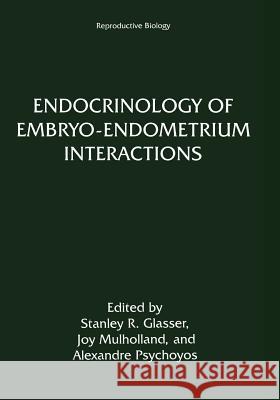Endocrinology of Embryo--Endometrium Interactions » książka
Endocrinology of Embryo--Endometrium Interactions
ISBN-13: 9781461357667 / Angielski / Miękka / 2011 / 415 str.
Early embryonic loss is a continuing social and economic global problem. In human populations the estimates of interruptions early in pregnancy range from 35-60%. In animal husbandry (swine, ruminants) fully 30% of pregnancies fail to survive early events of gestation. The futility associated with this persistant high risk is even more unsettling because of advances made in assisted reproductive technology which, although this very selective methodology has added to our knowledge of embryo-endometrial interactions, has resulted in a birth rate of only 14%. These studies have instigated comparisons of the live relative contributions of the embryo and the uterus to the outcome of pregnancy. These analyses have shown that we have learned significantly less about the role of the uterus in deciding the outcome of either natural or assisted pregnancies. In 1979 a quotation by George Corner was used to set the tone of a meeting that was devoted to discussion of the cellular and molecular aspects of implantation. In spite of the proliferation in research activity which occurred in the following 15 years our real understanding of the embryo transfer process has fallen short of our expectations. We use the Corner quotation, once again, to preface this symposium so that we may recall that the fundamental nature of the process which regulates embryo-endometrial interactions still escapes us.











